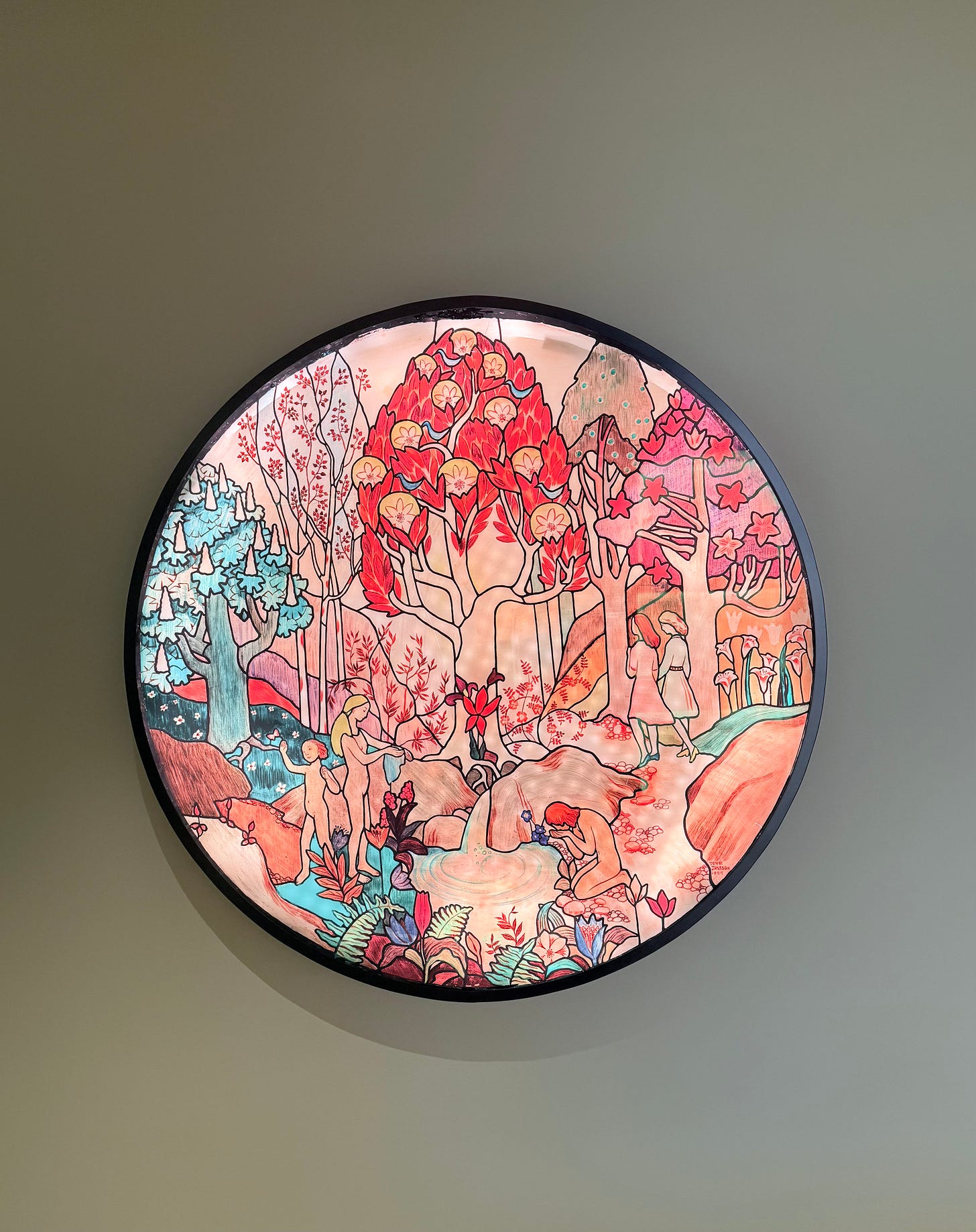My name is Linda. I write a bi-weekly newsletter about computer science, childhood, and culture.

It is warm enough to forget a coat to a birthday party. Mimosa season changing to daffodil season. I’m writing this from Brussels, which is mere 1.5 hours by train from Paris - I’ve had commutes longer than this.
Life still in boxes and make-do furniture instead of real one, but I’m finally reunited with many of my books. Leafing through them, I’ve been thinking about small archives of our own making, things we collect and how “girls love having their little digital archives” (Tumblr, 20755 notes - gosh I miss this Internet).
Bisou,
Linda
I've been circling around the idea of small, personal archives as the most interesting kind of training data. It started with my experiment in making Marimekko-clothes names in 2018 and continued with feeding my notes and book highlights to a large language model.
One of my problems with Generative AI is that it leans towards the median. Anything I generate with AI has this softened, blurry feeling of conformity. I’ve tried to figure out ways to bypass the effect, but to make something playful, I need to feed the generative AI interesting, weird, unexpected sources of information.
Which makes personal digital archives and non-digital data more important than ever. Suddenly, my years of hoarding texts, images, and links feel like a meaningful act of preservation.
Benjamin Breen at Res Obscura writes about this same idea from a historian’s perspective: “Historians cultivate a specific form of intuition. Nothing is well defined when you begin a historical research project. You go into an archive with a question or topic in mind, but without an answer or a clear argument. You leaf through documents or do word searches in databases without a real sense of what you will find.”
I’ve had this same experience working with archives. For my book, I sifted through years of end-of-year papers from a rural electricity company in the 1930s at the National Archive, looking for interesting fragments. And when searching for early Finnish female programmers, I relied on that same slow, intuitive approach—digging, cross-referencing, letting my brain mush everything together, guided by a sense memory of paper textures and pencil markings.
As Generative AI scraped the web, this kind of information is becoming valuable. Probably less than 1% of the world’s data is openly accessible on the web. As Breen puts it: “As a field, we now can more clearly see the negative space around what is legible to AI systems, and work within those constraints to do and think things that even hyper-advanced machines trained exclusively on digital data cannot.” Where is the rest? Some in corporate, proprietary storages. But also in national archives, research collections, oral histories. And in the hands of small, personal collectors.
A few Finnish examples: The Finnish Institute for Children’s Literature preserves Jukka Itkonen’s personal library - he was a poet I loved growing up, and his book collection is a window into his world. I also love the Eero Saarinen drawings archive available on my forever favorite website Finna. Even smaller: the Letterform Archive has scanned 500+ Japanese paper chopstick sleeves, donated by Susumu Kitagawa. And nc has scanned and shared 200+ lai see (red envelopes), capturing a wide range of traditional and modern designs.
These aren’t grand, state-preserved collections. They’re personal, deliberate, odd. And that’s what makes them so rich.
So: What do you collect? What small archive are you tending to?
In computer science, a linked list is a linear collection of data elements whose order is not determined by their physical placement in memory. But here, it’s a selection of things I’ve been reading lately.
Public Domain Image Archive. I just used the archive to find illustrations for a project I’m working on and it’s such a generous, lovely piece of work.
I’ve linked this before, but can’t stop thinking about what happened when Wes Anderson curated an exhibition for Vienna’s Kunsthistorisches Museum. “We would get an email from Wes asking, ‘Do you have a list of green objects? Could you send us a list of everything you have that is yellow?’ Our data system does not have these categories.” Comes with a delightful book, Il Sarcofago di Spitzmaus e Altri Tesori, that sold out immediately.
Lost Art of Logarithms. I owe Charles Petzold a lot of my understanding around computers and I was delighted to find he is writing his next book as a public work-in-progress. It’s interactive and about how logarithms are central to our perceptions and understanding of the world.
Two Martha Stewart crafts to present your collection. I think I pinned these well over ten years ago and they still do the same thing to my brain as the Tumblr quote before.
I’m hoping to surface and share stories from all of you, and I’d love to see your creations! Here are a few teachers using Ruby in creative, fun, and inspiring ways.
I did a small talk for teenage girls everywhere to honor the International Women’s Day. It’s about mapping a constellations, not a career path.